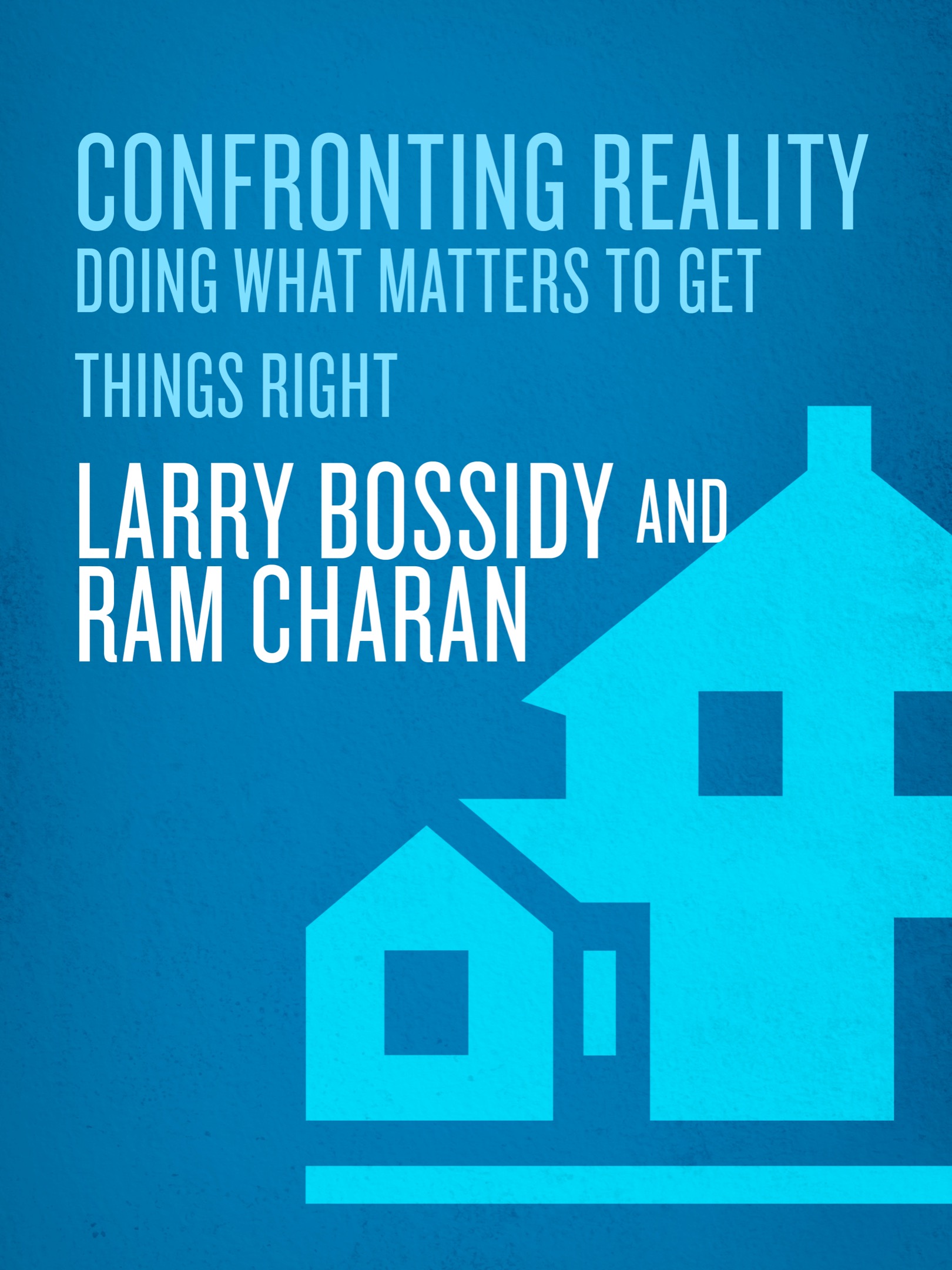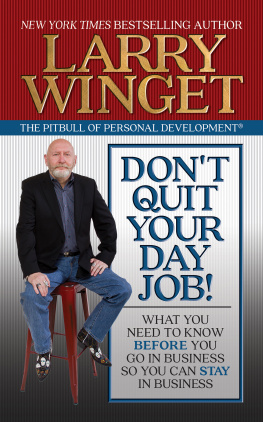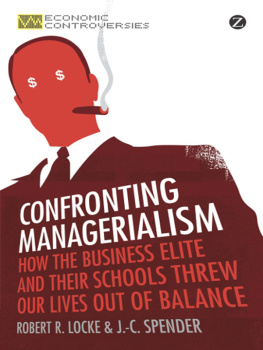Contents
Landmarks


Contents
Introduction
Breaking with the Past
Its time to radically change the way you think about your business.
Any plan for a business has to answer three questions: Whats the nature of the game were in? Where is it going? How do we make money in it? These questions go to the heart of what business is all about; they are the fundamentals of business thinking. Yetincrediblyin many organizations today they rarely get asked, much less answered, adequately.
It takes unflinching realism to get such answers. But the established methodologies for defining the purpose of a business and planning its future have drifted steadily away from realism. Many people in business today are boxed in by dysfunctional practices and habits that more often than not obscure reality, rather than expose it. Many have succeeded anyway in the past. Fewer will in the future, becauseas we will see shortlythe business environment is becoming far less forgiving of mistakes.
When we wrote Execution almost three years ago, we focused on the gap between strategic plans and their outcomes, which so often fall short of the planners ambitions. We pinpointed execution as the missing element, and explained how to link the strategy, operations and budgeting, and people processes to achieve effective results. This was a reality-based approach and weve been gratified by the number of people whove used its lessons to improve their businesses.
But it turns out that wed only begun our journey. As we continued with the thinking wed started, we dug deeper into the reasons for our own successes and failures along with those of others whom wed known and observed. Eventually we found that the gap originates with the very nature of how people conceive the purpose and direction of their businesses.
In many organizations, large and small, the process is flawed. People dont fully understand the game theyre playing because they dont look at it hard enough. They dont ask whether they can realistically make the money they hope to, and why. Specifically, they dont analyze and link the three fundamental components that determine a businesss success or failure: the environment it operates in, the financial targets it needs to meet, and the internal activities and capabilities that it depends on in the given environment to meet the financial targets.
Why not? Because until now there hasnt been a specific discipline for understanding the game at this level. The traditional strategic planning process is an approximation, but it falls short because it doesnt force people to organize the fundamental components into a framework that links them rigorously.
Everyone needs to fully understand the realities of the world in which they do business, and they need a new way to mesh their business goals and actions with those realities. We show how to do this with a specific and unique methodology using a concept that is widely misunderstood: the business model.
Business model is a new name for an ancient analytical tool. The people who succeed in business at any level, from shopkeepers in primitive third-world villages to entrepreneurs drawing up their first business plans to CEOs of global corporations, have always worked with business models, most of them intuitive. Today spreadsheets allow you to construct highly elaborate models, but the basic premise hasnt changed: a business model makes it possible for you to gain a comprehensive and realistic understanding of how to make money.
The version of the business model we have developed is a robust, reality-based process for thinking about the speciWcs of your business in a holistic way. It shows you how to tie together the financial targets you must meet, the external realities of your business and internal activities including strategy, operating activities, selection and development of people, and organizational processes and structure.
Our business model builds realism into the process of plotting your companys direction by enabling you to link specific facts about the external environment with your financial aims, organizational capabilities, and action plans. It tells you sooner rather than later when your fundamental business premise is under assault, where your best opportunities lie, and whether you need to change internal activities or the business model itself. It will be your central tool for confronting reality.
The fact is that the strategic plans of most companies dont work. A key reason why is that little time, if any, is spent harmonizing the facts of the external environment, the financial targets that are set and the internal capabilities of the business so that these discrete activities work together. Lets say, for example, that one of your financial targets is 12 percent sales growth, but that the overall growth of your served market is 5 percent. Without specific programs dedicated to meeting that top line objectivemarketing, sales incentives, the right people in the right jobs, et ceterathe 12 percent goal is a chimera and the likelihood of the strategy working is close to zero.
Your business model is incomplete and ineffective unless you debate and harmonize your external environment and financial targets with your internal capabilities through a process we call iteration. As we will show throughout the book, iteration is not a one-shot meeting that gathers up key people for a review, but a mentally challenging recurring activity to get things right. Once you start to practice it youve confronted reality and built a platform for profitability, growth, and prosperity in synch with what is going on in the world.
The process of iteration makes you confront the world the way it really is, not how you would like it to be. It is intimately tied to the idea of business savvy. People often use the phrase to describe really astute business leaders, the kind of people who possess a shrewd, instinctual feel about how to make money. Business savvy distinguishes those who over time consistently make their businesses succeed from those who have the occasional stroke of genius or lucky break.
Our analysis of business savvy shows that its essence is the use, intuitively or explicitly, of the business model in choosing where and how to make money. People with business savvy have specific financial targets in their minds. These targets are the reference point for everything they do, from looking for opportunities and dangers in the external environment to designing the combination of strategies, operating practices, people, and organizational processes that will enable them to capitalize on the opportunities and avoid the dangers. And guess what? People with a well-developed sense of business savvy seldom have a strategy ahead of time. Instead, they devise their strategies as a means of meeting their financial targets, not the other way around. How they do this is a point we will develop at length and illustrate through analysis of companies in a wide range of businesses.
What kind of people are we talking about? Sam Walton, Michael Dell, Jack Welch, the successful proprietor of a shoe store in Bombay... and, would you believe Billy Beane, general manager of the Oakland As?
In Major League Baseball, as everyone knows, the rich keep getting richer and the poor get poorer. Teams in big markets will always be able to outspend those in smaller ones because they have more revenues. Who can compete with Yankees owner George Steinbrenners vast treasure chest in hiring talent? The Yankees, along with teams in big metropolitan markets like the Boston Red Sox and the Los Angeles Dodgers, have framed a business model based on rich television and radio revenues that provide them with pots of money to bid for highly regarded players.












